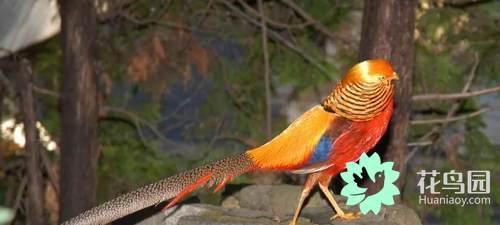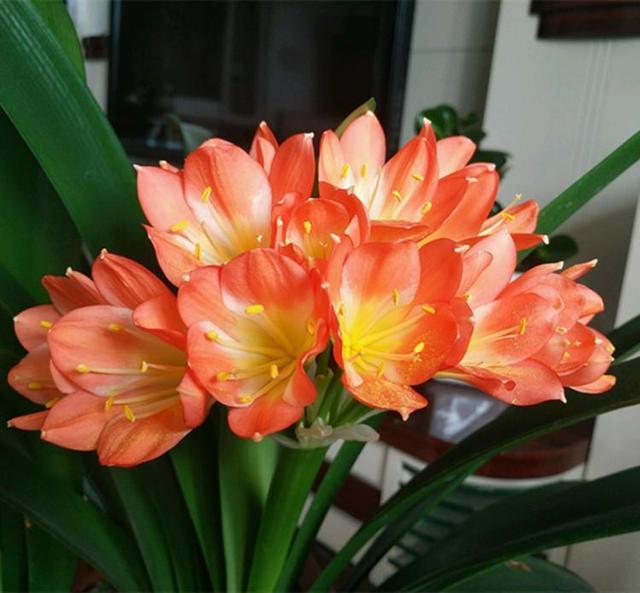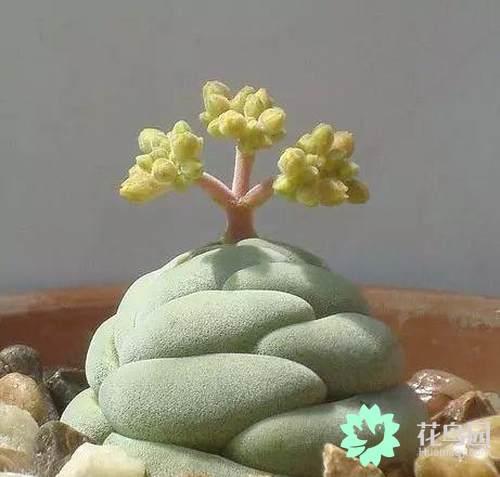Flowers as beautiful as Caragana

As one of the most magnificent species of pheasants, the red-bellied pheasant, a Chinese specialty, is well-known at home and abroad. In fact, there is also a group called "Caragana" in the plant circle, and that is the native plant that I would like to introduce to you today-Caragana.
Red-bellied Caragana (calphotos.berkeley.edu)
Caragana sinica belongs to the genus Caraginae of Leguminosae. It is native to North, East, Central, South and Southwest China, and is often born on hillsides and thickets. When the flowers bloom in spring, they are often golden and spectacular.
Caragana, the first flowers are bright yellow.
1 the origin of the name
According to the Flora of China, the name "Caragana" comes from the "disaster-saving Materia Medica" written by Zhu Xun in the Ming Dynasty. There is a cloud in the sixth volume: "Flower (bà) tooth flower, real name Caragana flower, also known as sauce petal." There are also many kinds of plants among families, gardens and houses in the mountains. Leaves like Chinese wolfberry cotyledons and small, "four leaves" give birth to a place; branches also like Chinese wolfberry, with small thorns. Yellow flowers, shaped like chicken, knot small horns, sweet taste. " In other words, it is named "Caragana" because its flowers are shaped like chickens. "Jin" originally means "silk fabrics with bright colors and patterns", and later extended to "gorgeous and colorful". And Caragana flowers are yellow and often reddish, and "shaped like chicken shape", so they got the name "Caragana".
Caragana, the flowers will turn orange-red to dark red in the later stage, so that there will be several different colors of flowers on a tree.
The Latin name Caragana of Caragana comes from the Latinized Khargana for other species of the same genus in Mongolian, while the species addition word sinica has been introduced in the previous article introducing wisteria (poked here), meaning "produced in China", which means that China is the model producing area of this species.
2 a variety of uses
From Zhu Kui's description of Caragana, we can see that Caragana has been cultivated in people's courtyard in ancient China. This practice continues to this day, and Caragana bushes planted in front and behind houses can still be seen in some rural areas of eastern China. In addition to growing ornamental plants in the courtyard, Caragana is often used as a material for bonsai. In addition, the root bark of Caragana is often used in traditional Chinese medicine. In East China, people also eat their flowers, and they are often called "broom flowers" because they are like finches.
Caragana, Flora of China records Jiangsu, Zhejiang, Hebei, Shaanxi, Jiangxi, Fujian, Henan, Hubei, Hunan, northern Guangxi, Sichuan, Guizhou and Yunnan. Born on hillsides and thickets. The type specimens were collected from China.
It should be noted that another narrow-petal dye wood (Genista stenopetala), which is often used as an ornamental potted plant, is also often called "broom". This group is rich in Cytisine, an alkaloid that is toxic to humans and has been shown to cause dyspnea or even death, as well as teratogenicity. Narrow-petal dyestuff flowers may also contain this toxic substance, so it is recommended that you do not eat.
Narrow-petal dyestuff is a small ornamental shrub introduced from abroad in recent years.
Molecular structure of genistein (wikipedia.org)
3 "gaudy" flowers
Many people have seen the flowers of Caragana, but few have seen the fruit of Caragana for a reason. According to a domestic karyotype study on 14 species of Caragana in 2002, Caragana is triploid. Triploid organisms are often sterile because it is difficult to undergo meiosis to form gametes. Although the morphology of the pods of Caragana is described in the Flora of China, I am afraid it is rare to see Caragana that can really bear fruit.
4 a wide variety of Caragana families
In Flora of China, there are more than 100 species of Caragana in the world, including 62 species made in China, 80-90 species of Caragana in Legumes of the World, 63 species of Caragana in his book taxonomy and floristic geography of Caragana in the world, and 66 species in China in Flora of China.
From the above data, we can roughly see the complex and changeable morphology of Caragana. In addition to Caragana, Caragana (C. rosea) is also often used as an ornamental plant; Caragana microphylla (C. microphylla) and Caragana Caragana (C. korshinskii) are often used as forage grass (Caragana Caragana and Caragana are often considered to be the parents of Caragana); tree Caragana (C. sibrica) is often used as greening and garden ornamental plants, and so on. In addition, a molecular study in China in recent years shows that Halimodendron halodendron, which originated from Central Asia to the northwest of China, should be incorporated into this genus, so its Latin name is Caragana halodendron. It is these members that make up the Caragana family.
Caragana safflower (Dave "s Garden)
Tree Caragana (wikipedia.org)
Bell thorn (jaredsgarden.com)
- Prev

Gentleman orchids are also picky about eating three things and blooming neatly.
It can be said that the gentleman orchid is loved by everyone, whether it is the young or the elderly, are very popular, many flower friends like to plant. However, many flower friends raise magnolia always do not blossom, or there is the problem of arrows. Actually, that's because.
- Next

How does the enlightened succulent plant have such a strange form?
For many friends who have just entered the succulent pit, most of their impressions of succulent plants are beautiful and cute, and they are adorable at a glance. But what the editor tells you today is the strange side of succulent plants, their appearance and habits.
Related
- Wuhan Hospital Iron Tree Blooming Result Was Instantly Frightened by the Gardener Master
- Which variety of camellia is the most fragrant and best? Which one do you like best?
- What is the small blue coat, the breeding methods and matters needing attention of the succulent plant
- Dormancy time and maintenance management of succulent plants during dormancy
- Minas succulent how to raise, Minas succulent plant pictures
- What are the varieties of winter succulent plants
- How to raise succulent plants in twelve rolls? let's take a look at some experience of breeding twelve rolls.
- Attention should be paid to water control for succulent plants during dormant period (winter and summer)
- Watering experience of twelve rolls of succulent plants
- Techniques for fertilizing succulent plants. An article will let you know how to fertilize succulent plants.

